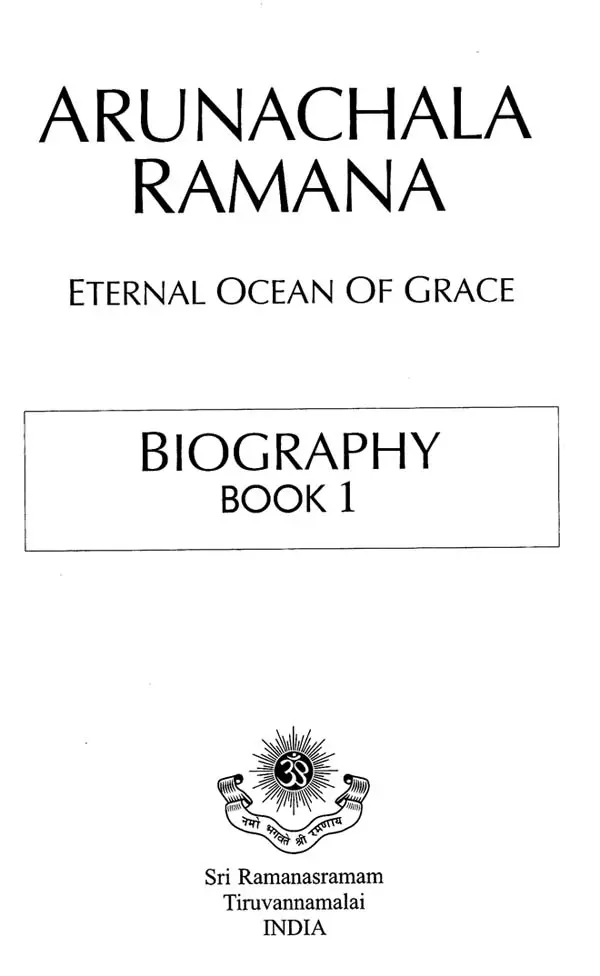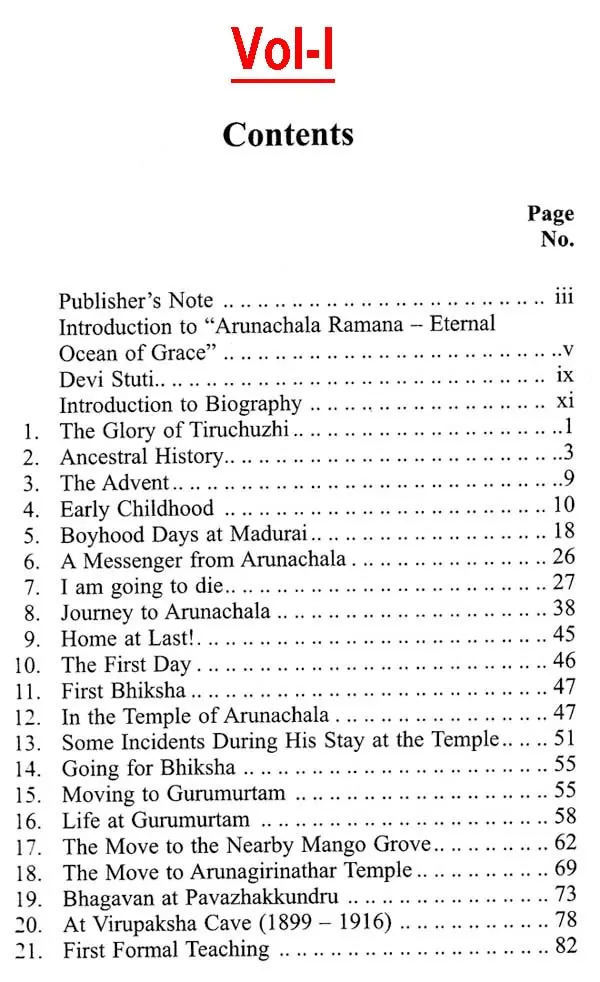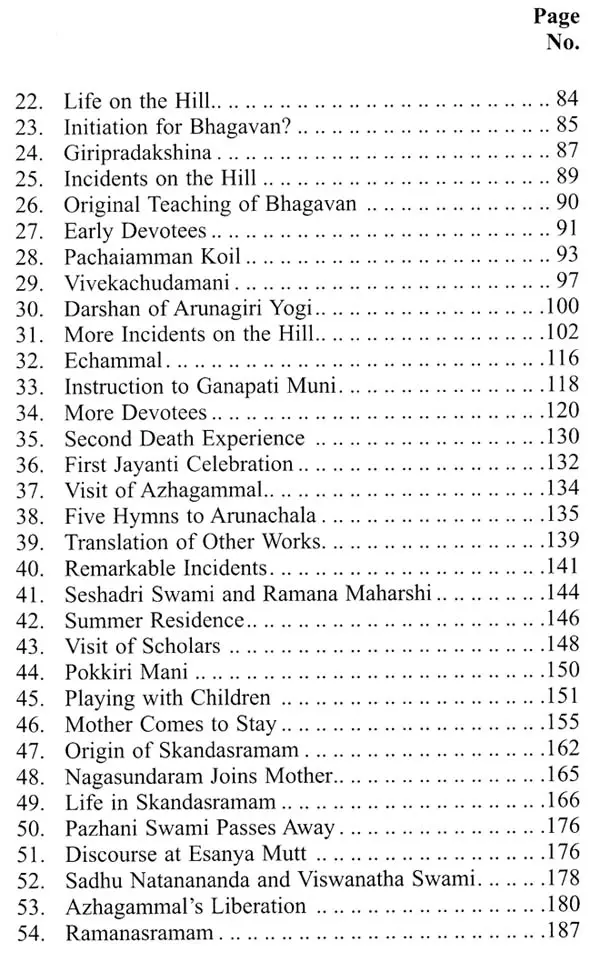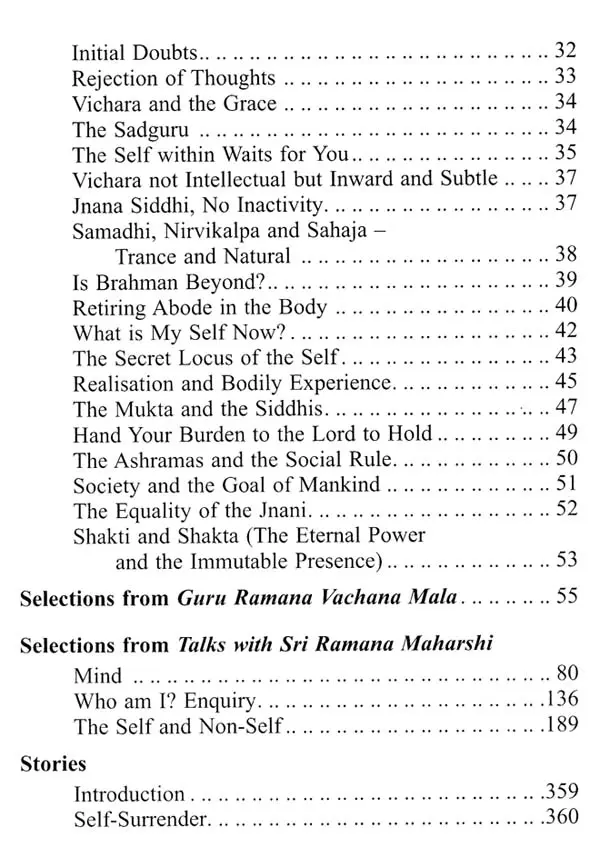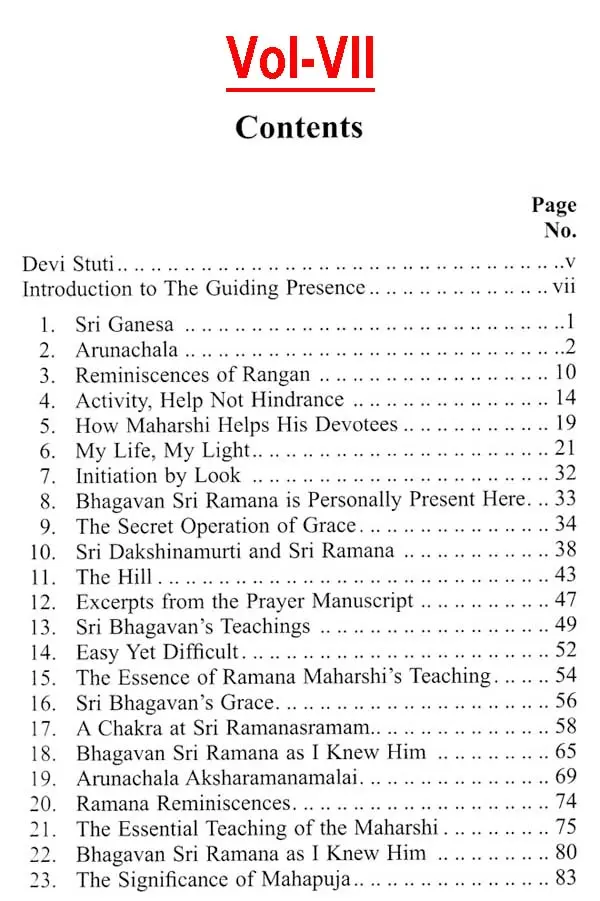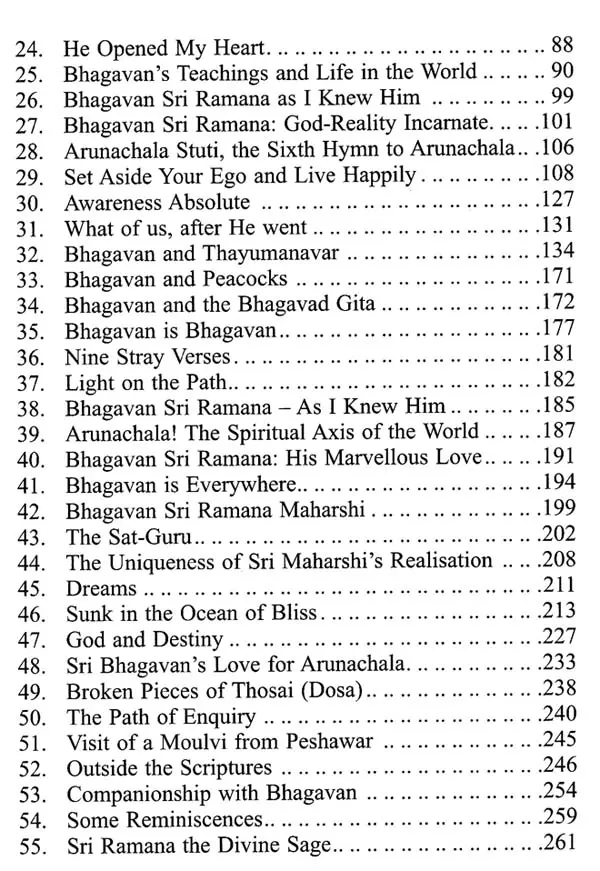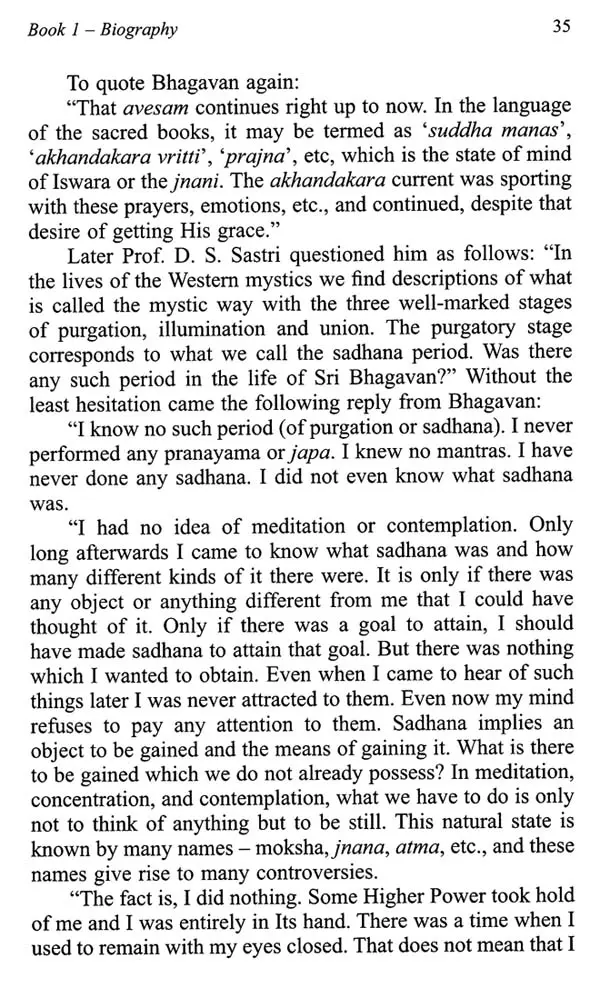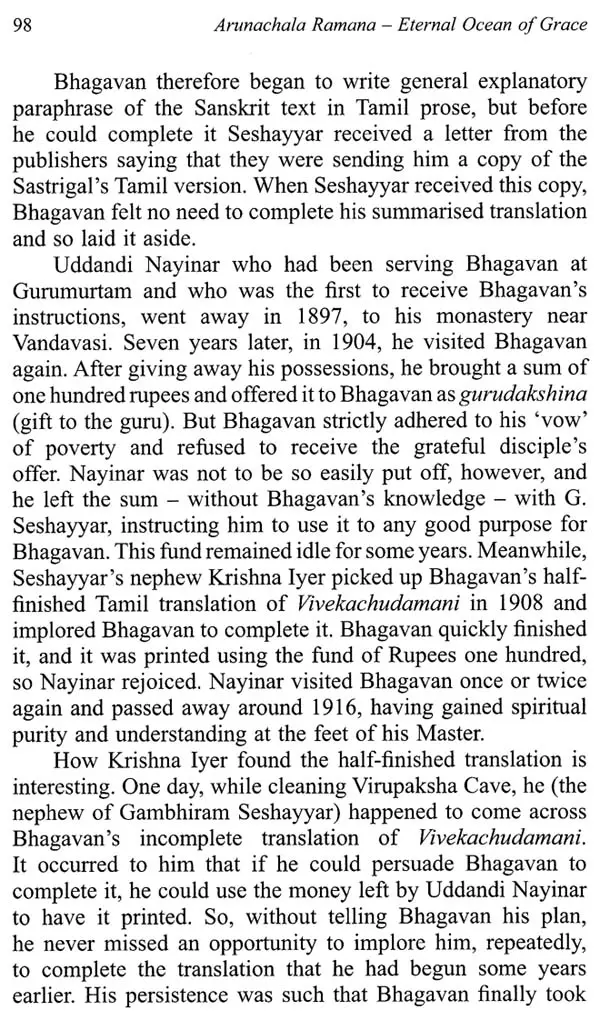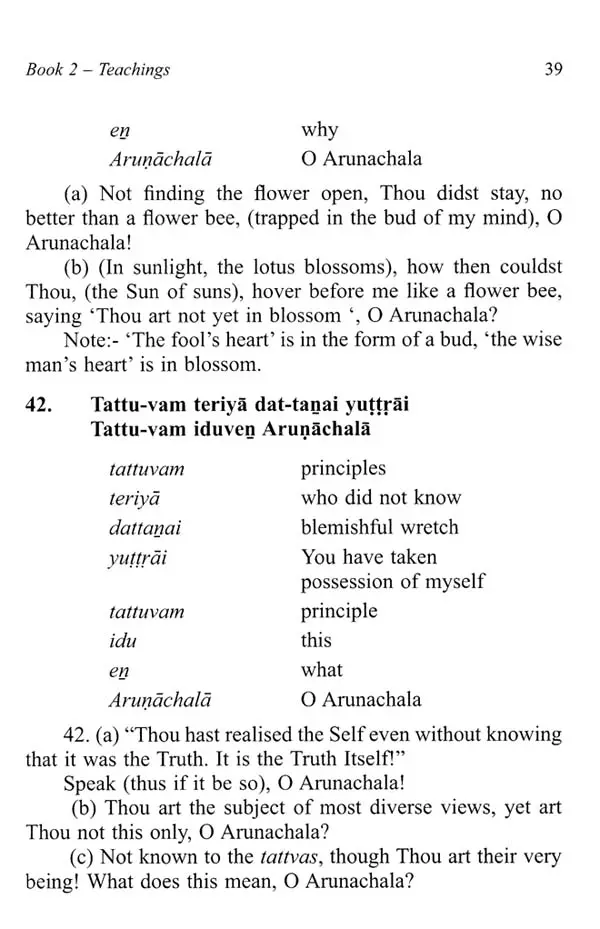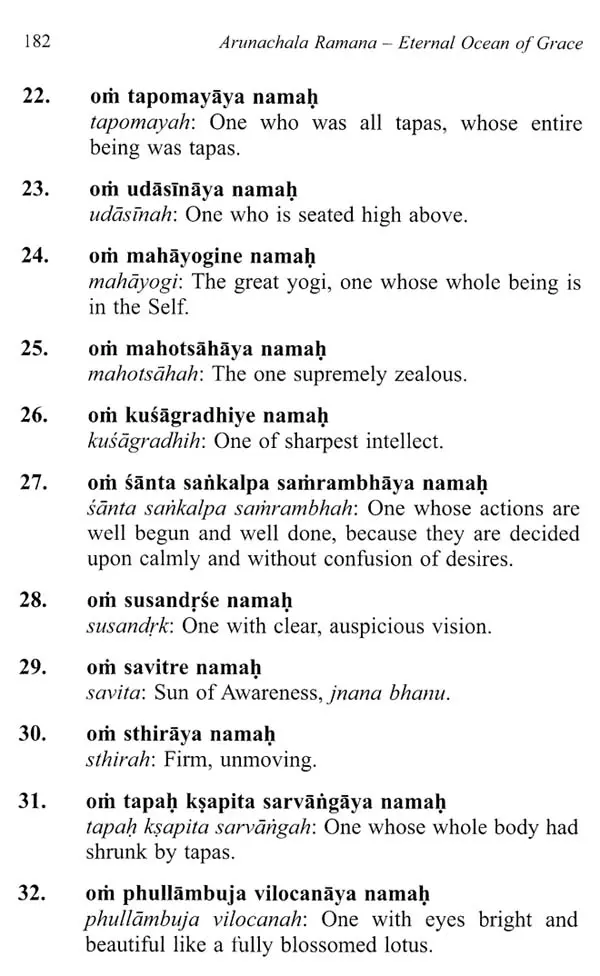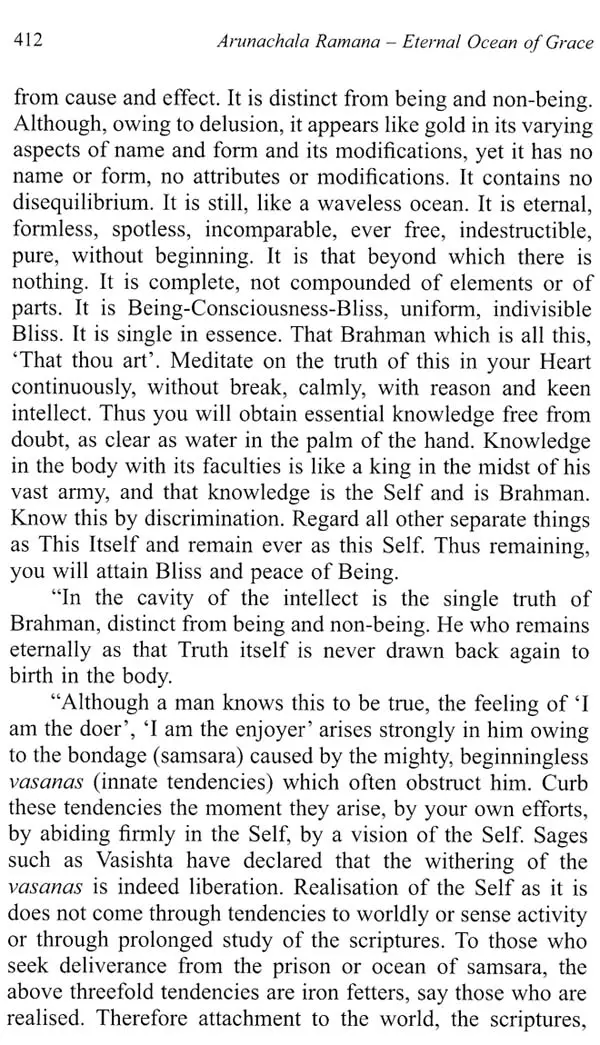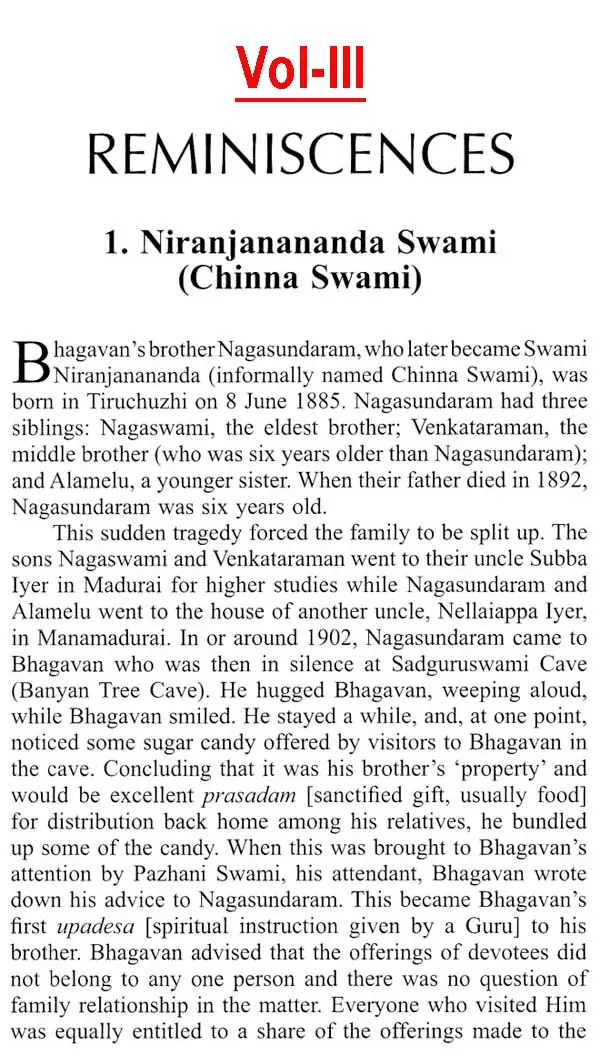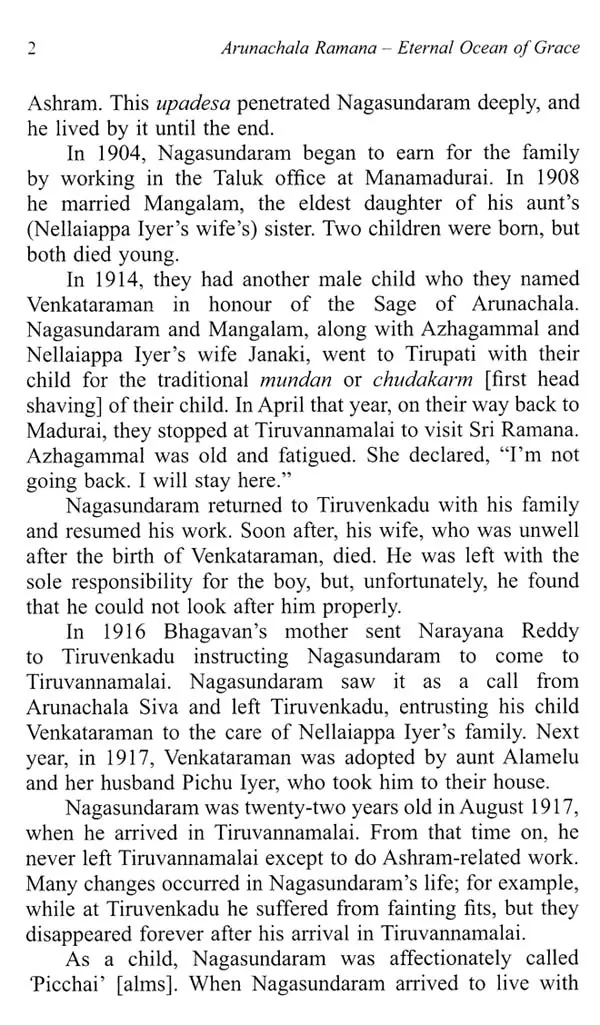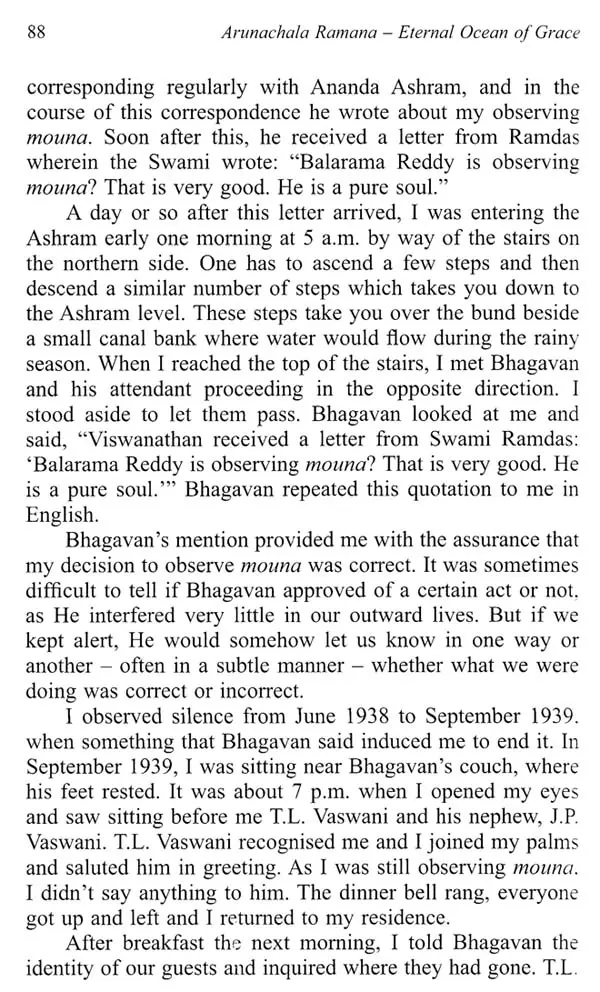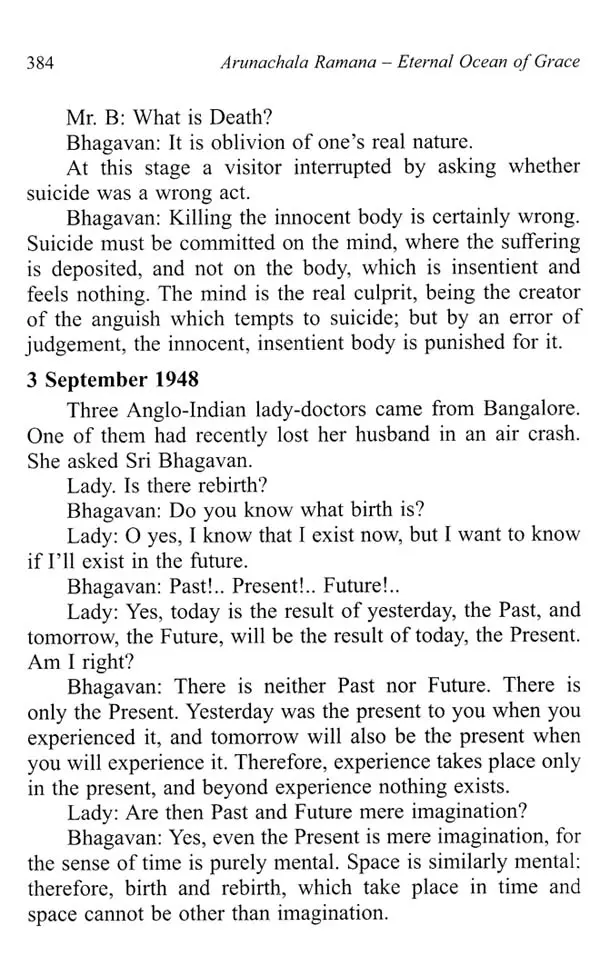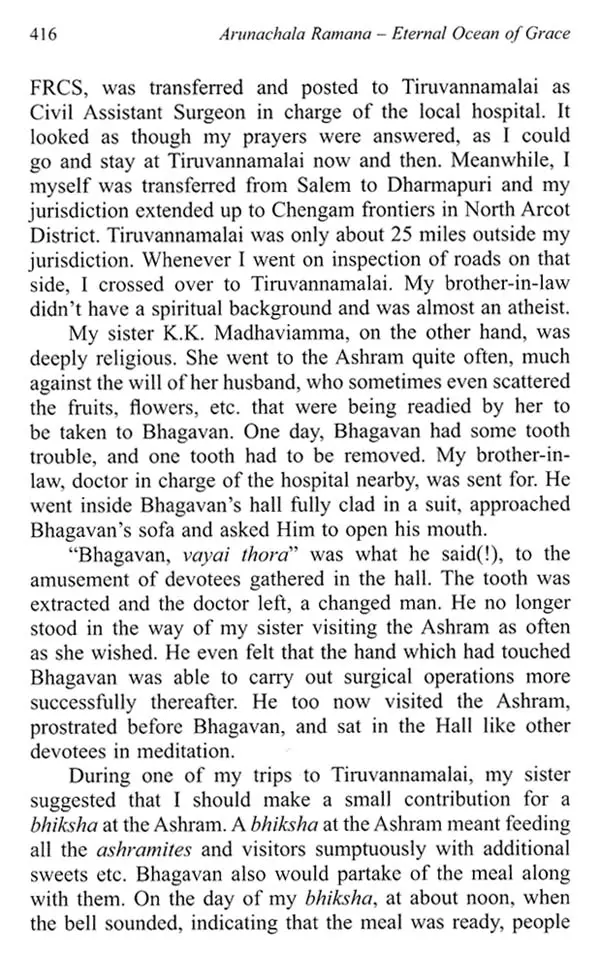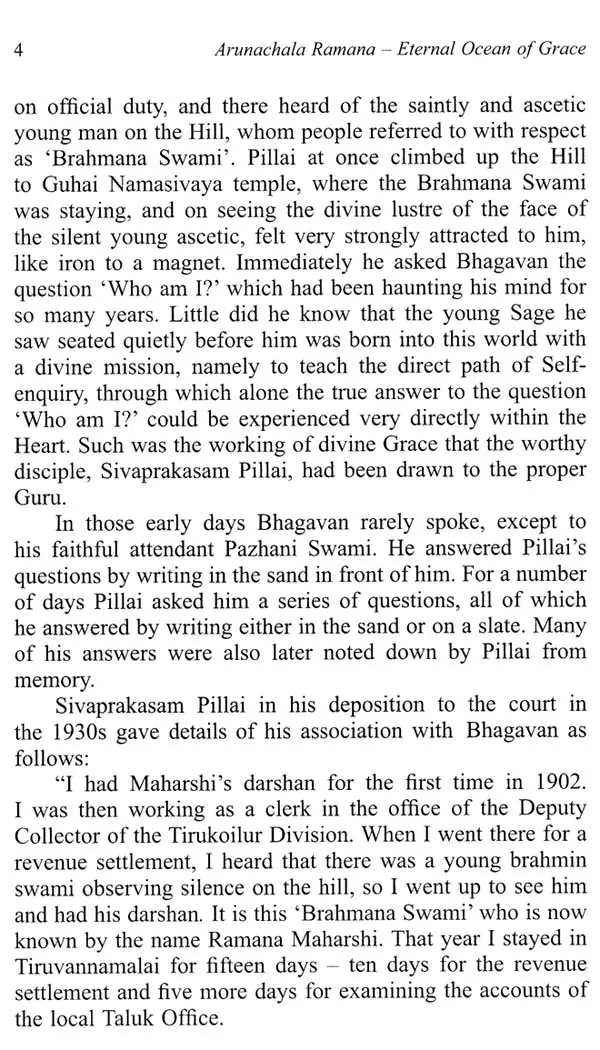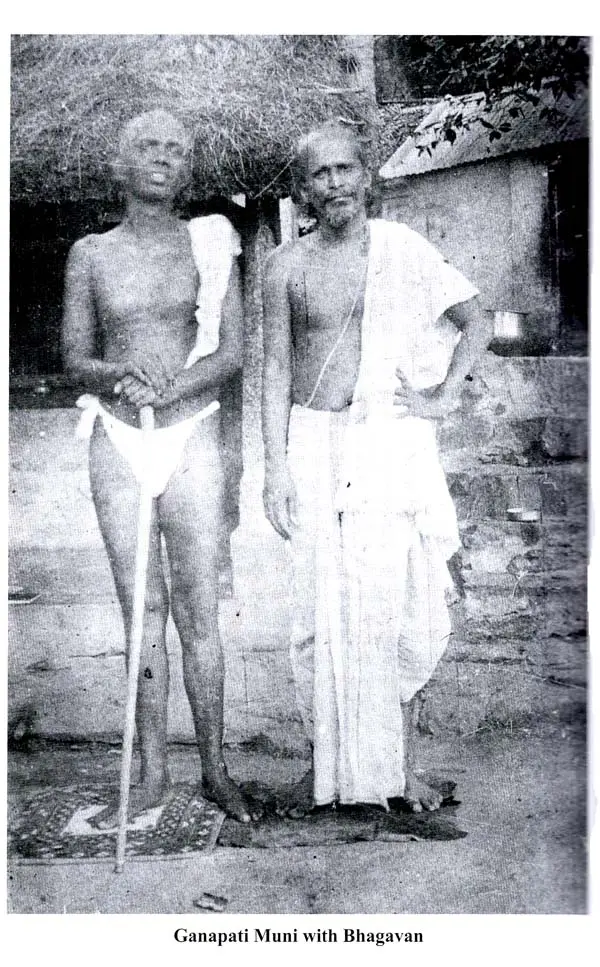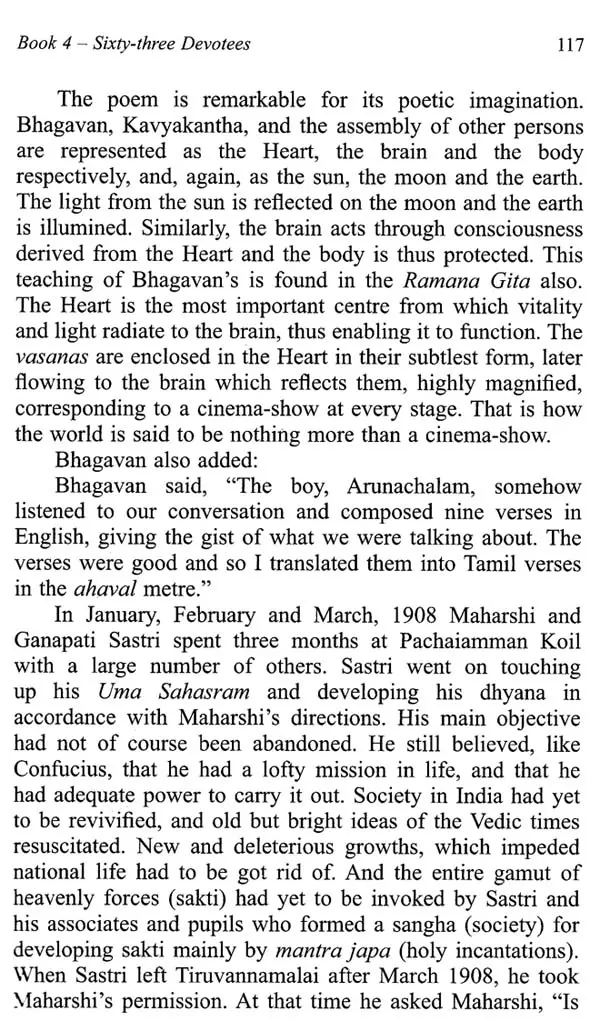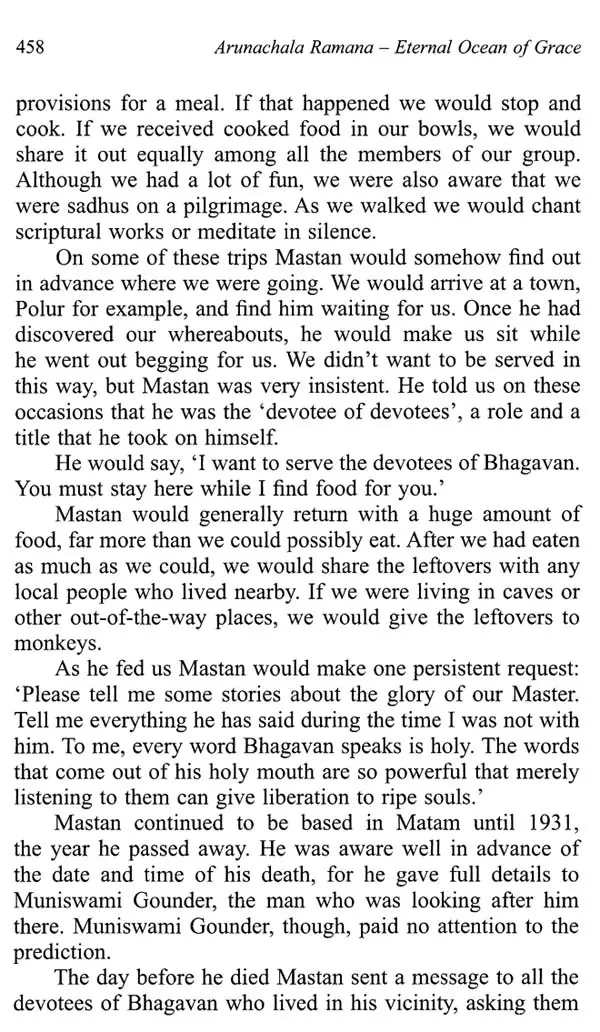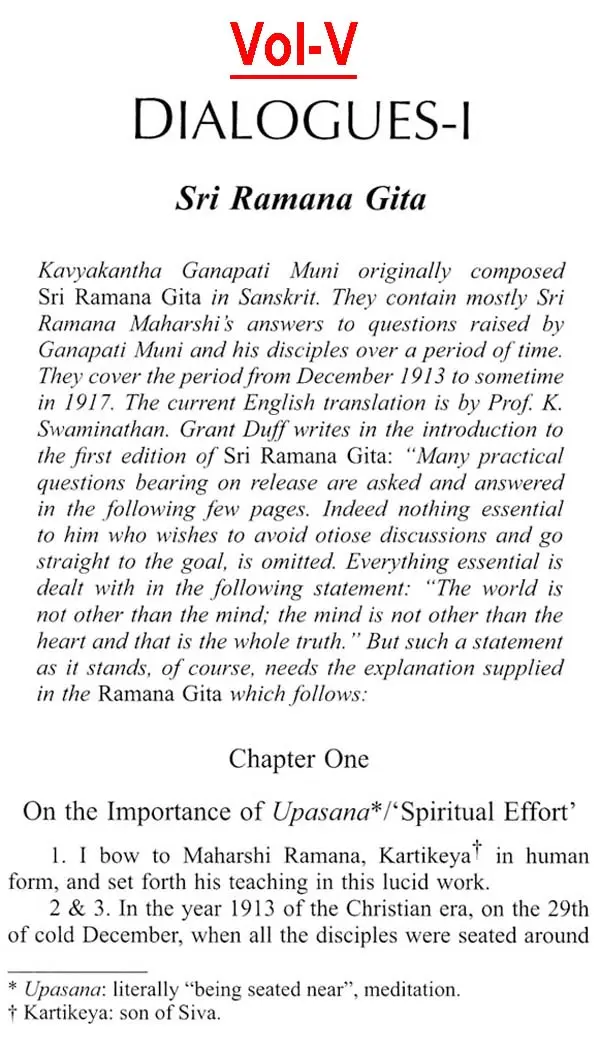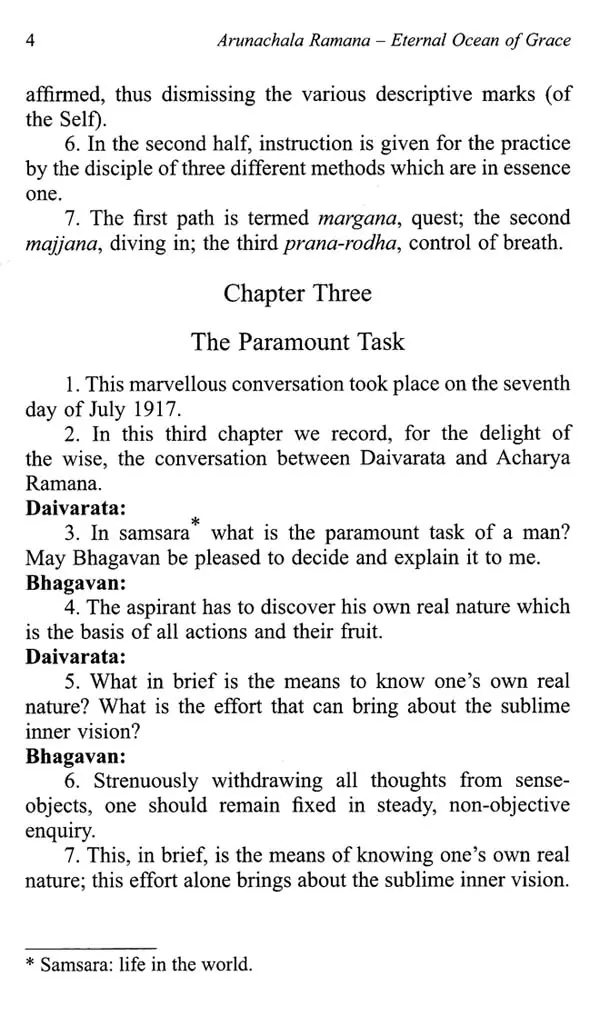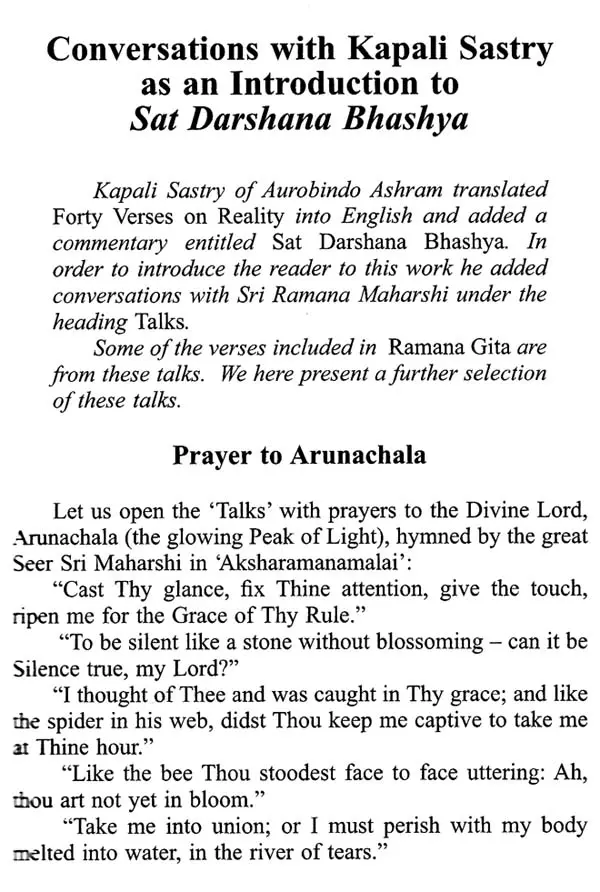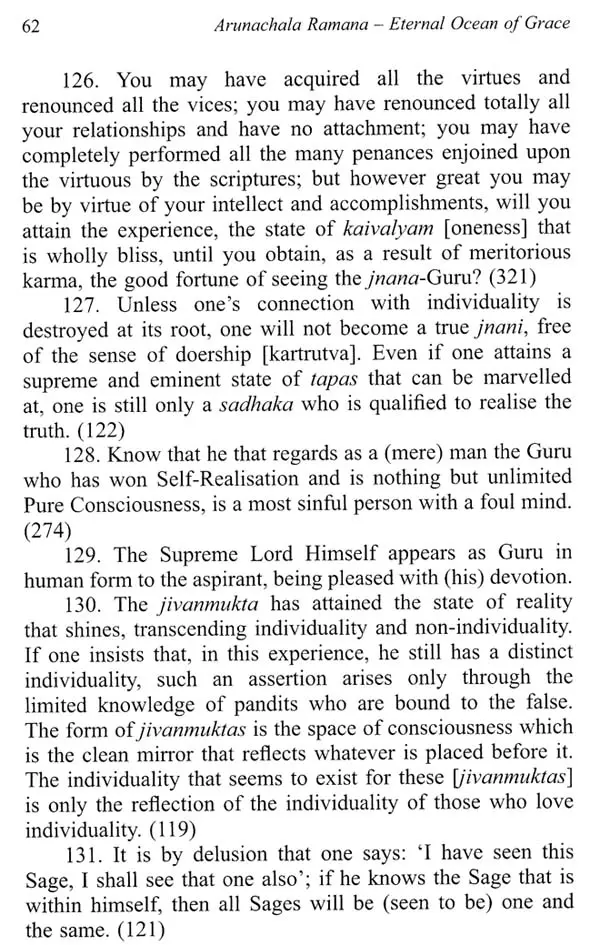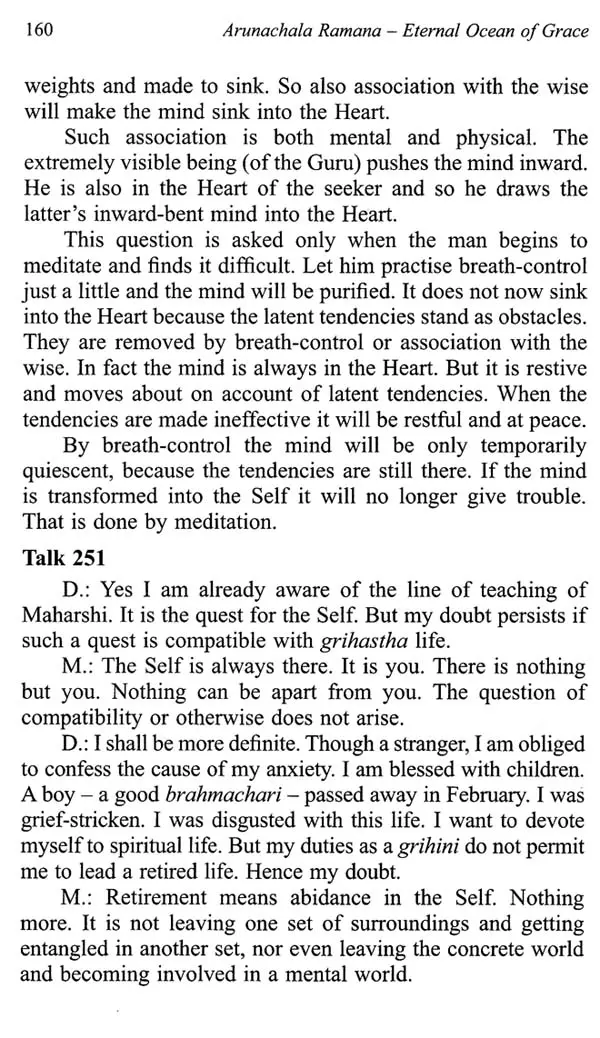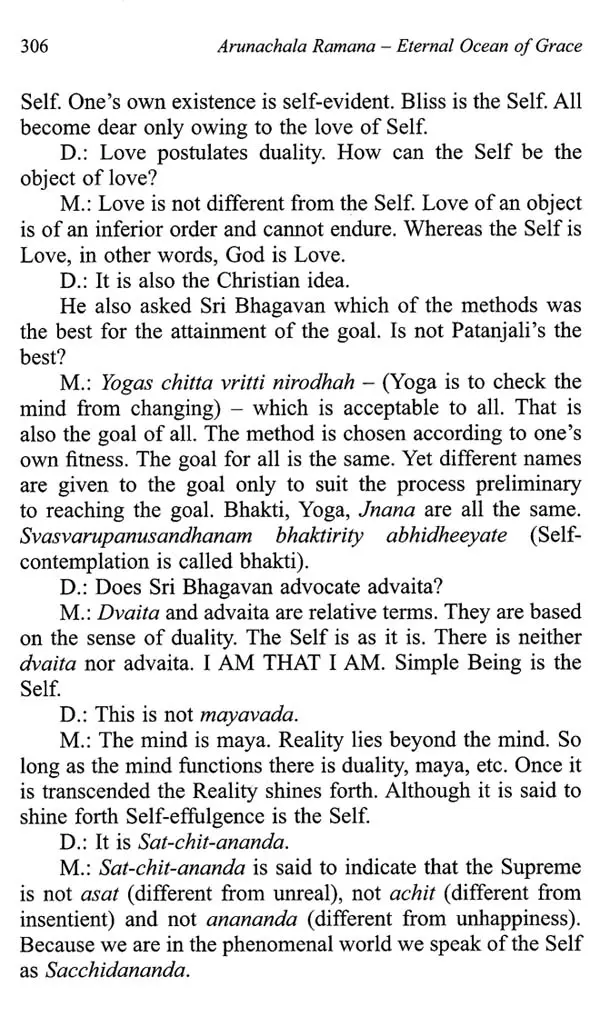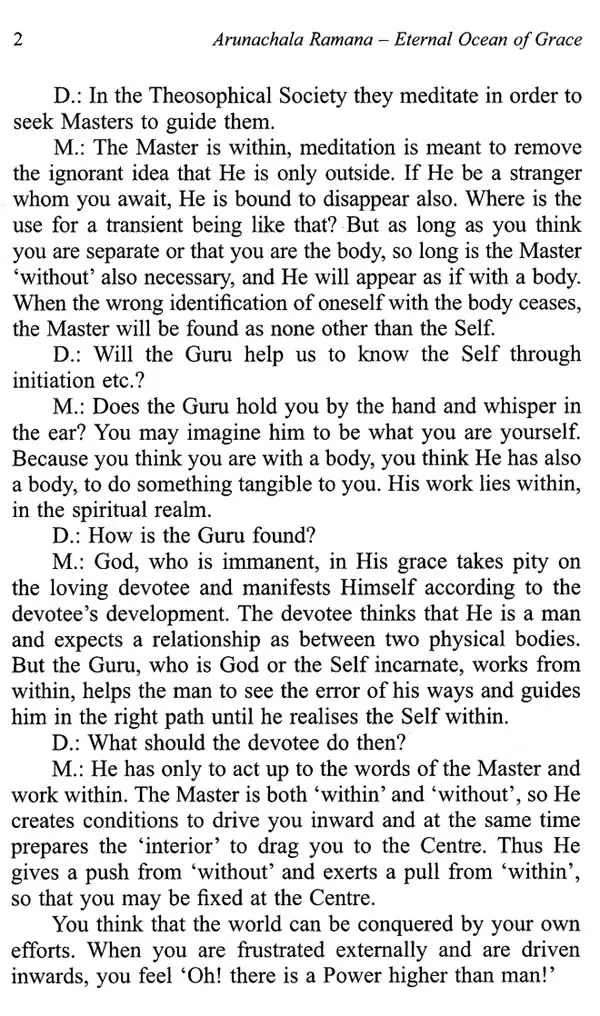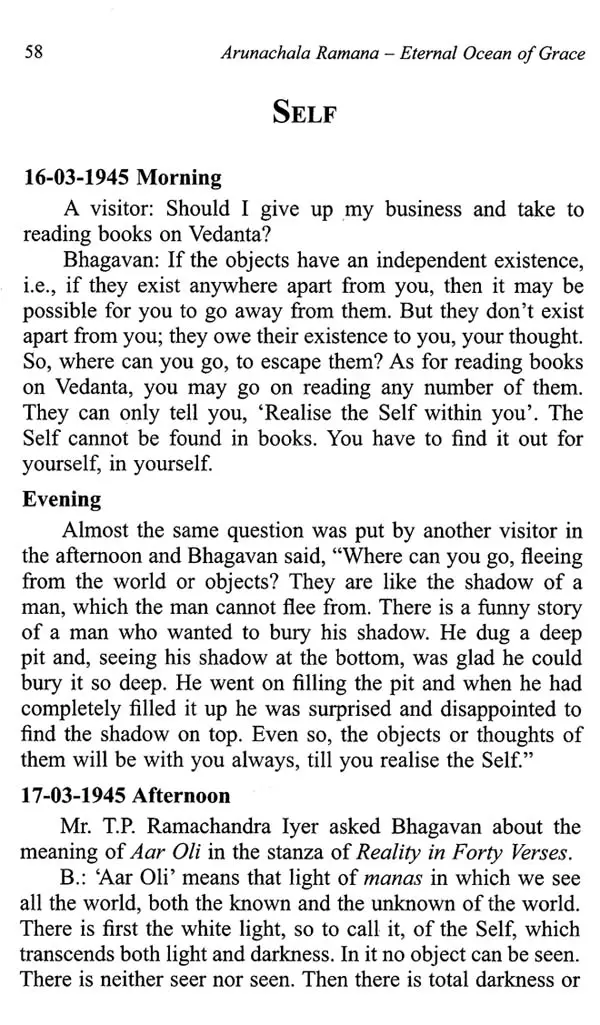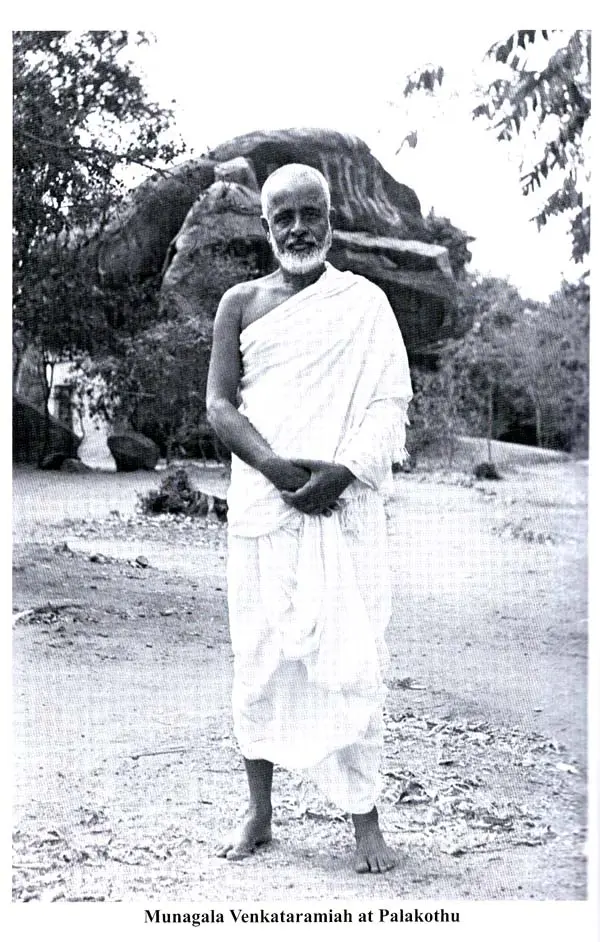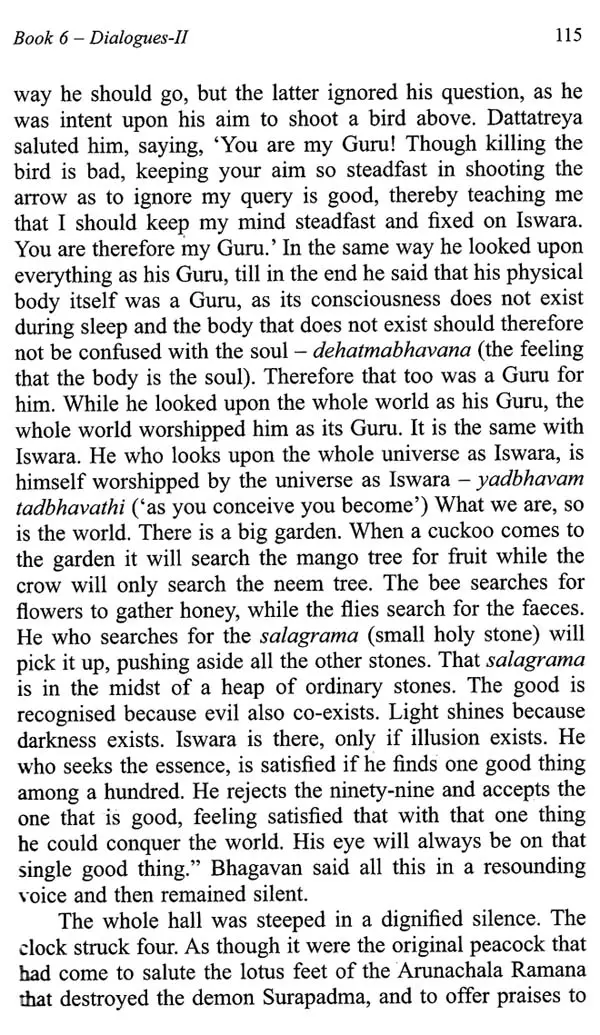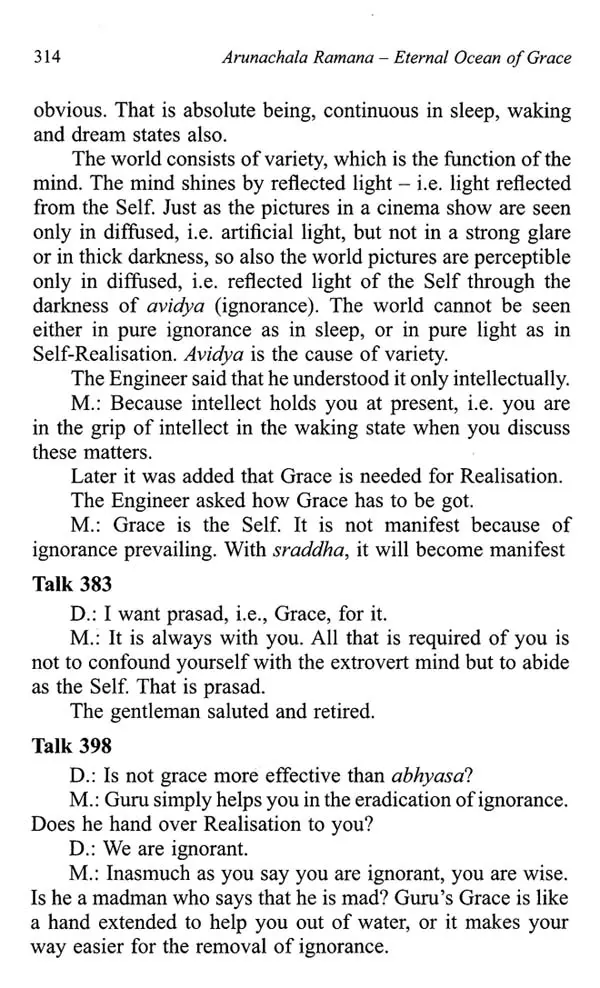
Arunachala's Ramana: Eternal Ocean of Grace (Set of 7 Volumes) - A Book
Book Specification
| Item Code: | NAG589 |
| Author: | Ramana Maharshi |
| Publisher: | Sri Ramanasramam, Tamil Nadu |
| Language: | English |
| Edition: | 2018 |
| ISBN: | 9788182882775 |
| Pages: | 3523 (223 B/W Illustrations) |
| Cover: | PAPERBACK |
| Other Details | 8.50 X 5.50 inch |
| Weight | 4.70 kg |
Book Description
At the close of the nineteenth century, South India, or at least a part of it, was being slowly introduced to Western civilization, customs and industry, and railway lines were laid connecting important cities. However, life in the remote parts of South India was exactly the same as it had been centuries ago. During this period if a traveller were to take a country road from the temple city of Madurai in South India and travel westwards, he would have had to pass through one of the most arid areas of India. He would have seen men clad in loincloths toiling under the hot sun to grow a few grains of corn and millet for their families. Occasionally the traveller might have crossed green fields of paddy, where the mode of irrigation was a peculiar see-saw device used for drawing the water. The passerby might also have heard the singing of folk songs by these yeomen, a custom that has all but vanished with the advent of mechanical farming.
Further on his way the traveller would have come across small villages consisting of cottages with thatched rooves and naked children playing around. These children and their parents lived in abject poverty. If the monsoon was bountiful the family would enjoy two square meals a day for a few months. The rest of the year they subsisted on gruel and spinach. Their domestic requirements were met by a barter system. Once in a week there used to be a village fair where neighbouring villagers would bring things to buy and sell - their farm produce, provisions, vegetables, condiments, corn, pulses, toys, trinkets and coarse cloth for garments. However, the affluent ones living in the cities had things brought to their houses. During the harvest season they bought their annual requirement of rice and stored it in the granary. Most of them had cows which met their dairy requirements. Both the rich and the poor hardly left their village, especially the poor, who for generations had been born, bred and died in the same village. Even the rich travelled only to sacred places such as Banaras, and did not expect to return from such a journey. Wayside inns provided free board and lodging for these pilgrims.
All Indians considered entertaining guests to be very important. Even to this day, in most houses a weary guest is always welcomed and offered a meal. Unlike modern-day citizens, people of yore had no great desire or ambition to acquire wealth, fame or property. Far from the madding crowd's ignoble strife, they kept the noiseless tenor of their way. Every caste and creed kept to themselves without interfering in others' affairs and lived in harmony, respecting others' faith and beliefs. Although there were skirmishes between factions, these were localized and did not spread.
During this period a great saint of West Bengal came to spread love and devotion and his message was carried throughout India by one of his illustrious disciples. Cults like the Brahmo Samaj and the Arya Samaj, etc., were also taking root in certain parts of India, but generally people had no leaning towards spirituality. As was later pointed out by Sri Bhagavan, where philosophy ends religion begins, and where religion ends spirituality begins. Hence spirituality transcends all religions and lies beyond them. Spirituality removes narrow beliefs, superstition, fears etc., and is common to all religions. This was understood only later in the twentieth century, as we shall see in this biography.
The effect of the Maharshi was tremendous on those who came to him as it still is. In these volumes we present the reminiscences of Raman as devotees and their reflections on his teaching. Thus those who were blessed to sit at his feet are sharing their experiences with the reader. In the various experiences and accounts one finds an underlying unity - unity of deep devotion and love for the Master.
What was the first impression on those who saw Bhagavan?
From the moment Bhagavan's eyes fell on a devotee, the latter's heart went out to him in spontaneous love and reverence. Their visit to Ramanasramam was a shattering experience for some. They literally fell in love with Bhagavan. The love which was awakened was of a sort which bypasses the physical and creates an awareness of a mindless rapture, pure joy.
And what was the devotees' experience while they sat in his proximity? Sitting in Bhagavan's presence people commonly felt that for the time being all their troubles were over. And this was the wonder of his presence.
The most remarkable feature about Bhagavan's form was his eyes, extremely penetrating and profoundly fascinating. Once you had come within the range of those beaming eyes, there was no need for any other sadhana; and once these eyes had rested on you, there was no more fear or worry for you. The experience of a disraught young widow was quite typical. She went into the hall where the Maharshi was reclining and sat down. Bhagavan looked at her - just looked - with such infinite compassion that she felt that her sorrows were just not important any more. She remained sitting and felt totally at peace, though not a word had been spoken.
The Maharshi was a centre of love to his disciples. He showered his love and grace on the devotees in so many ways. It is said that love was the force that created the universe. Perhaps it is. But the force of such an unselfish love as Bhagavan's purifies our hearts when all other methods prove futile. Kindling a deep affection in the devotees' hearts, Bhagavan taught them by word and example. No discipline can give the disciple the true peace which the Master gives. His affection was always there unconditionally, and as fire melts ice so his affection made worries melt. Where else in the world could be found a purifying and transformative power such as this to bring peace to our hearts?
What was the change in a devotee's life after coming to Bhagavan? There was a pervasive state of being sparked by some kind of recognition which stayed with him and the sense of never being the same again. We may not claim that the devotee's life was totally transformed after seeing him. No. Most of them got married, set up house, had children and started a career of their own. Their grihasthasramam was their main preoccupation. But their visits to Ramanasramam had affected them. It had left a mark in their mind and heart. Although some of their material circumstances might have changed for better or for worse, their With regards to Bhagavan's life at Arunachala, one can see it slowly passing from the first stage to the second, and then on to the third stage. In the precincts of the temple and later on at Gurumurtham we find in Bhagavan a perfect example of all that is written in the Upanishads and other scriptures describing the state of ajnani, an enlightened being. During this first period, his body was unmoving; we see him sitting motionless, apparently oblivious of the external world or the movements of his own body. He knew not the difference between the passing of day or night, nor the changing of the seasons. Even the morsel of food put into his mouth by people who wanted to feed him remained there and had to be scooped out of his mouth by his attendant the following day. Such was his tate that even the natural functions of the body were minimal. Seldom in the history of sages does one come across a human being capable of such concentration, yet aware of things happening to his body. For, in later years, he recalled the first bhiksha he received from Arunachala, the disturbance caused by the urchins and his moving within the precincts of the temple from one place to another.
We judge Bhagavan from our own frame of mind, hence it may appear incredible to us that such concentration of mind simultaneous with the knowledge of the activities of the external world could ever be achieved. In the case of Raman a, he was both the doer and the witness.
It was in the second stage, at Virupakshi Cave, that Venkataraman was given the name Bhagavan Sri Ramana Maharshi, by Kavyakantha Ganapathi Muni. Ganapathi Muni was a great Sanskrit scholar and tapasvin who came to Virupakshi Cave in 1908. He immediately discerned the greatness and state of the young sage. Later he composed Uma Sahasram, Ramana Gita and Ramana Chatvarimsat, and also Sat-Darsanam, being a Sanskrit version of Raman a's UlladuNarpadu.
Except for a few, all of Bhagavan's works were composed while he was living at Virupakshi Cave and Skandasramam. While translations from Sanskrit texts into Tamil were made as a sublime expression of abidance in the Self and in response to the needs and requests of the devotees, the Five Hymns on Arunachala came gushing with a tearing force that completely engulfed Bhagavan. They were spontaneous outpourings of his deep love, springing from his intimacy and atonement with Arunachala who was mother, father, Guru and Beloved for Bhagavan. The composition of each hymn was mostly unpremeditated and spontaneous. Commentaries and translations of these hymns have been made in various languages. They are all right as they stand, but to comprehend the true significance of the hymns one should tune one's mind towards Arunachala Ramana. The hymns evoke various experiences in the listener or the reader, depending on the individual's circumstances.
The Advent of Sri Bhagavan, like that of every Master, was not so much to give us pleasure as to make us discover the pleasures of pain, for pain redeems and liberates. People run away from Masters if they find that life becomes too much for them in spite of the Master's presence. It is remarkable that devotees cling to Bhagavan and Arunachala even in extreme adversity. The more the grief, the more intense becomes their love and devotion for Bhagavan. There are devotees who even pray for adversities so that they may realize his unbounded grace and compassion for them.
TheFzve Hymns on Arunachala by Bhagavan offer perfect guidance and solace to the suffering mind. Each of the circumstances under which these hymns were composed is thrilling. When Bhagavan wrote Aksharamanamalai for the benefit of humanity, he walked around the hill composing the couplets with tears flowing from his eyes. It is reported that when he wrote the thirty-fourth verse (If thou fail to unite with me, my whole frame will melt into tears and I shall be destroyed), he wept and sobbed with his whole frame shaking. Aksharamanamalai surpasses in beauty and sweetness any other composition made in any language by any of the saints. It spans the whole gamut of human emotions and those transcending the human mind.
If we find, 'the world is too much with us', we may find solace in these hymns. When we are troubled by the complexities of our own mind, Bhagavan makes Arunachala readily available for us to cling to, to surrender to and to give ourselves unto him. Bhagavan had no need to compose these hymns, nor to go round the Hill and openly express his deep love for Arunachala. He did all this for the benefit of suffering souls. In Aksharamanamalai he implores Arunachala on our behalf to act as saviour, as otherwise we will be like tender vines that would wither away without his support. Such is his compassion for us.
Sages and saints have sung about Arunachala in glorious terms; but they have also sung about other deities, or at least about Siva in other shrines. As for Bhagavan, only Arunachala Siva existed. Bhagavan's reply to the Dikshitar from Chidambaram who invited him to have darshan of Nataraja is a case in point:
All the five elements come into existence only when Sakti seemingly forsakes her identity with Lord Siva, the Supreme Self. Since the five elements are only the creations of Sakti, She is superior to all of them. Therefore, more important than the place where the elements merge, is the place where Sakti herself merges. Because Sakti is dancing in Chidambaram, Lord Siva has to dance before her. But in Arunachala, Lord Siva remains ever motionless. Hence Sakti effortlessly merges in him through great love. (Arunachala Nava Mani Malai) After coming to Arunachala, Ramana never went beyond its limits. Though his mother and other relatives begged him weepingly to return, he held his own, conveying the message that nothing and no one could separate him from his Father who had given him spiritual refuge.
When Bhagavan lived in the caves on the Hill, he was very close to the birds and the beasts, the plants and the simple folk living there. Earnest seekers like Sivaprakasam Pillai and Gambhiram Se shier came and sat at his feet, while strife-torn souls found the peace they could not get elsewhere by just being near him.
Who am I? and Self-Enquiry contain Bhagavan's answers to questions put by Sivaprakasam Pillai and Gambhiram Seshier respectively. At the request of Gambhiram Seshier, Bhagavan translated Sankara's Vivekachudamani. Later he also translated Devikalottara, Sarvajnanottara, Sankara's Hymn to Dakshinamurthi, Guru Stuti and Hastamalaka Stotram.
This volume ends with the liberation of Bhagavan's mother, Azhagammal, and his coming down to live near her samadhi which later became Sri Ramanasramam.
